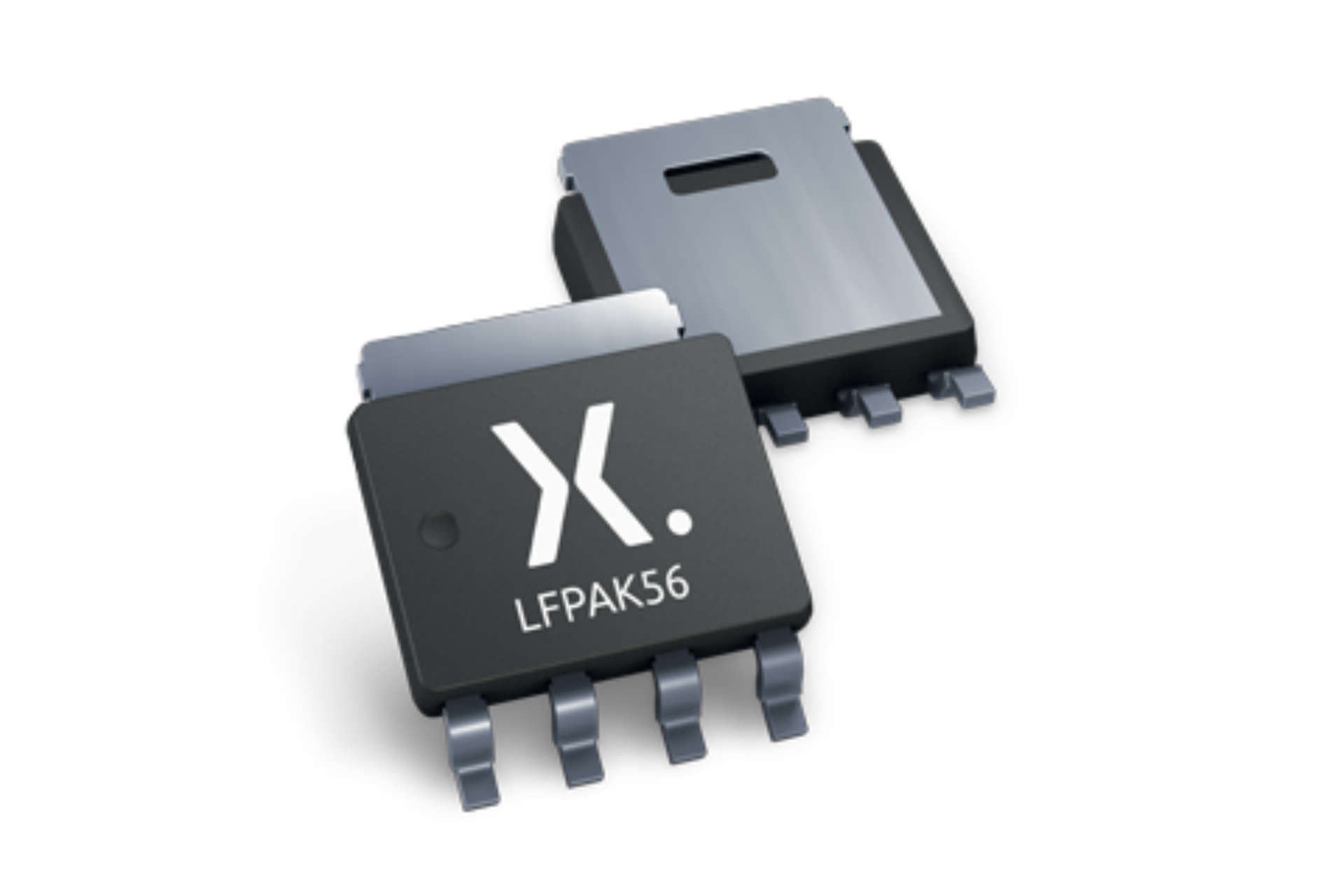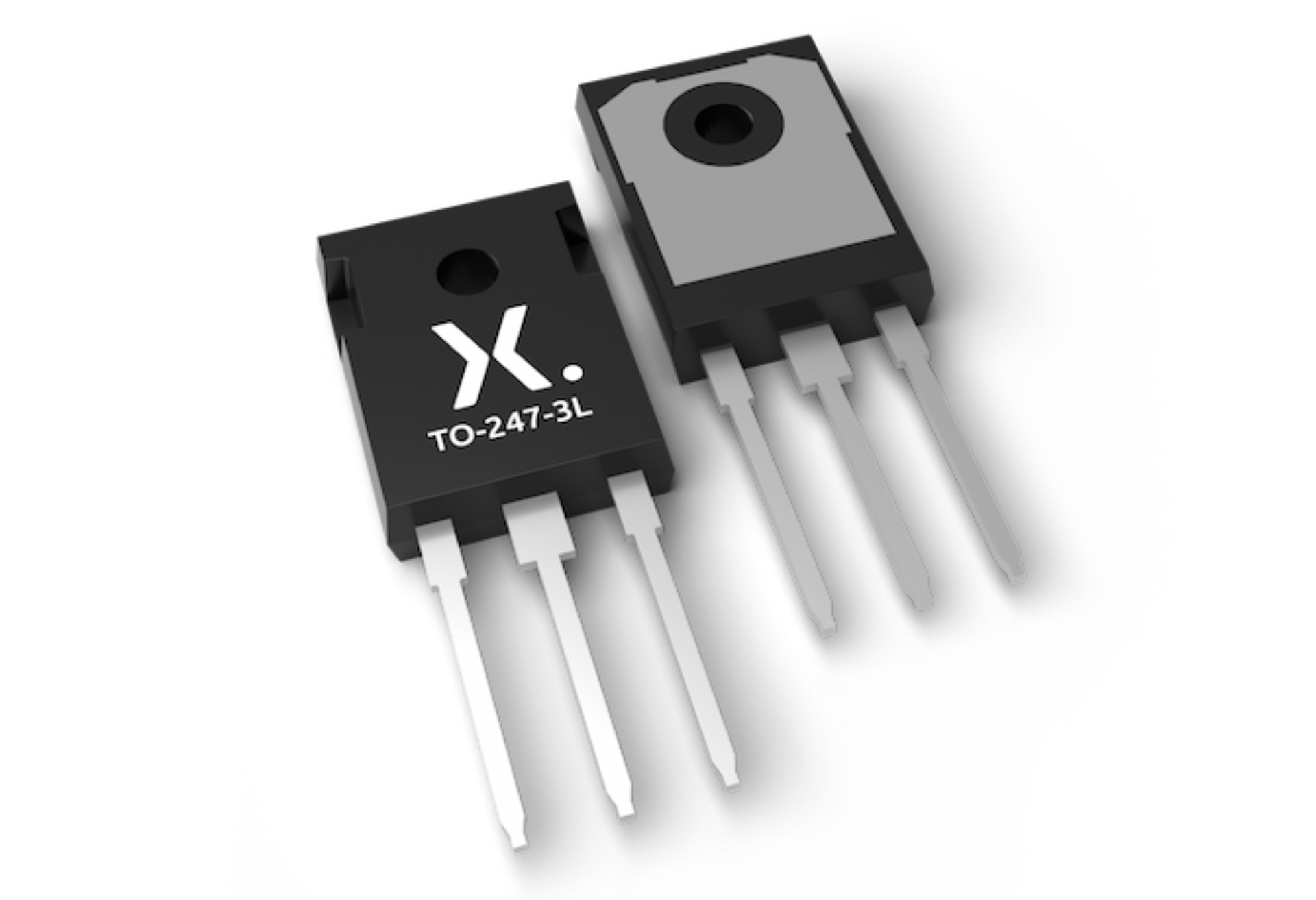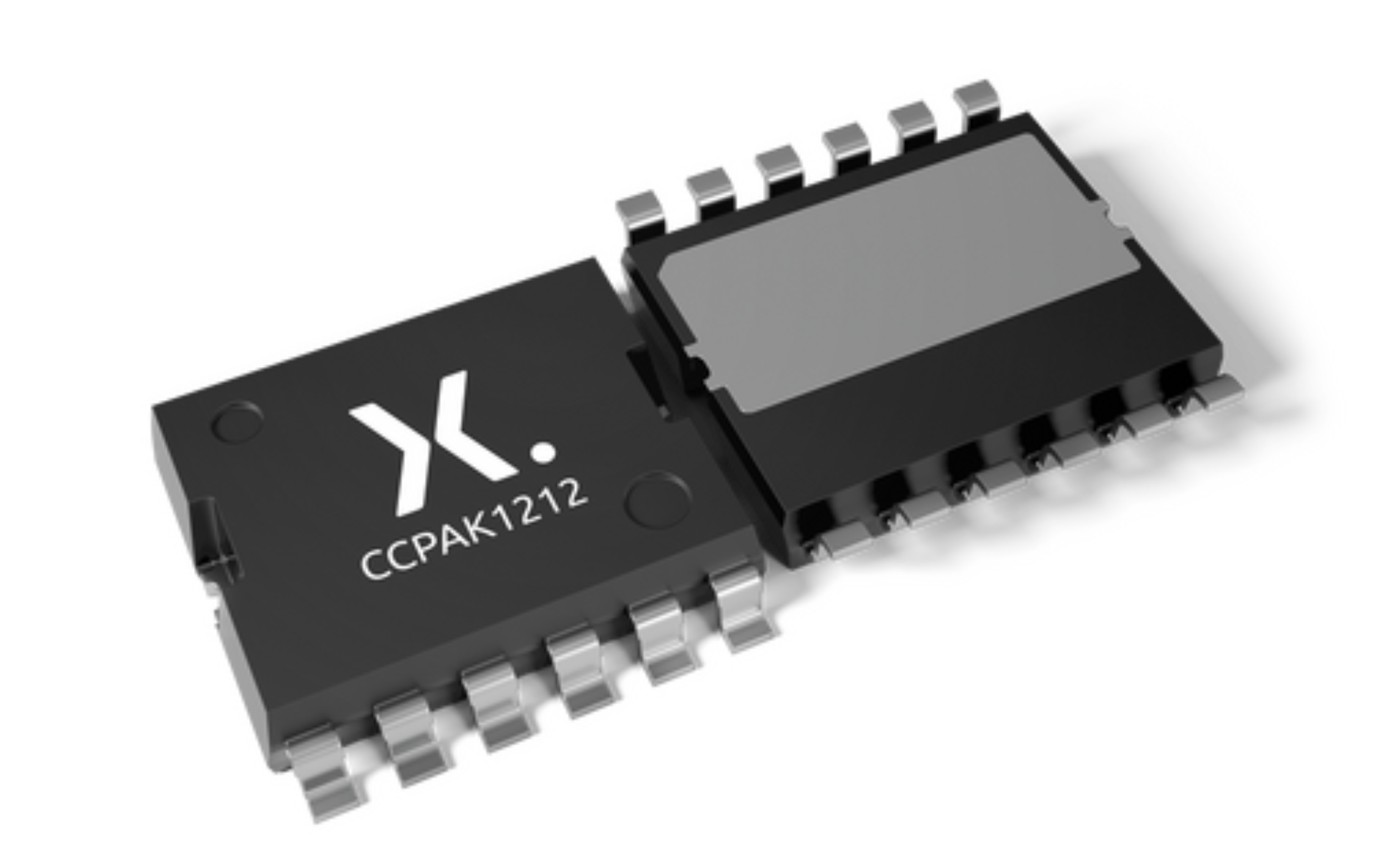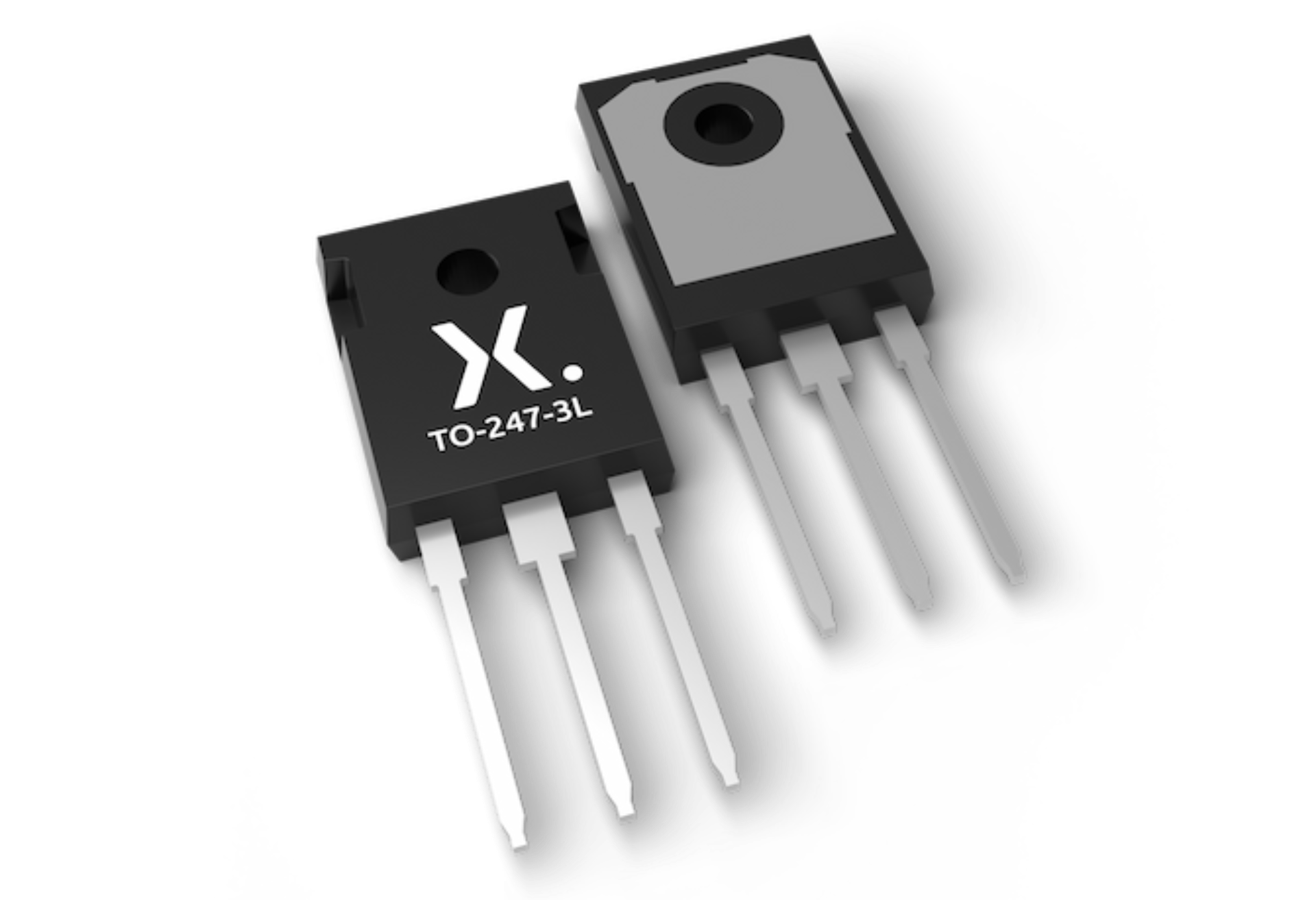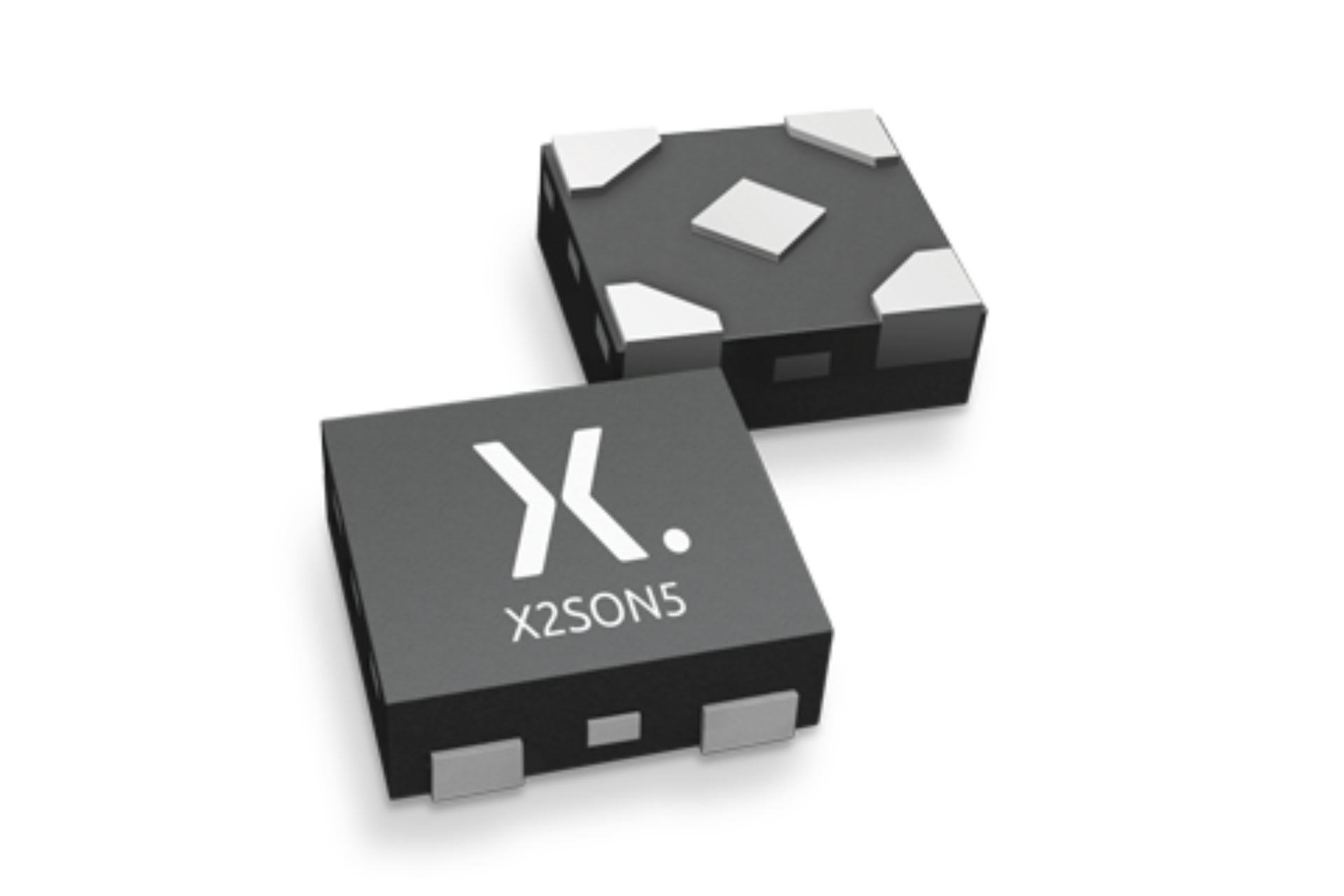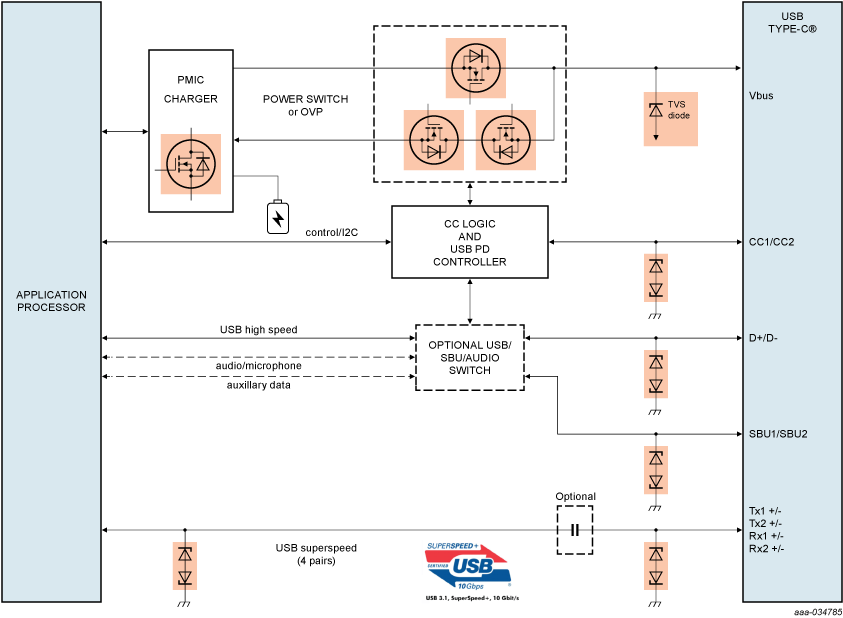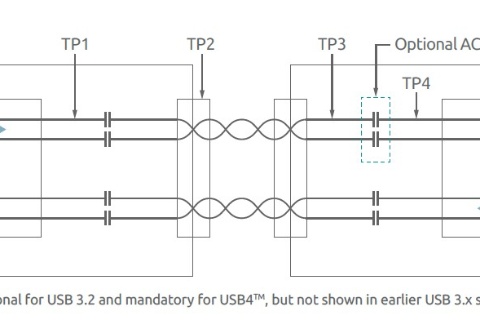Protection products
Power delivery products
Design challenges
- The extra performance and convenience offered by USB-C makes for more complex circuitry on the PCB
- USB PD via Type-C connectors allows for various power profiles up to 100 W, requires power control switches to be capable of withstanding 20 V or higher
- Low on-resistance is a pre-requisite to minimise energy loss, unwanted thermal challenges, and to comply with USB minimum-voltage regulations
- Designers need to pay careful attention to the trade-off between TVS terminal capacitance (Ct) and the available ESD protection level - to avoid data distortion while ensuring system robustness
ESD Application Handbook - Protection concepts, testing and simulation for modern interfaces
Nexperia’s ESD competence can help minimize the risk of ESD damage — supporting the design community in protecting applications and products against ESD issues. Inside this guide you will find invaluable information about ESD testing and the principles of ESD protection and EMI filtering, together with application examples with an emphasis on communication bus interfaces.
Intelligent miniaturization of ESD protection
If we consider the ideal ESD protection device, it does not impact signal integrity while clamping all overvoltage transients to keep the protected system in its Safe Operating Area. It will also not need additional space or routing.



